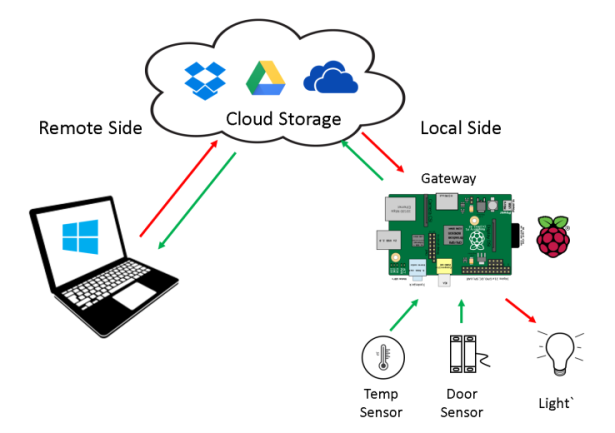IoT systems, particularly those for the smart homes, are accessed in two ways.
One way is through its public ip address where a local server or gateway is installed. This requires that the premises has accessible public ip address and require some technical know-how to configure the port forwarding. External direct ip access may be restricted within an organization, such as a lab from a university.
The second approach is the use of a cloud server. With a cloud server, an IoT system just require internet access and connect itself to the cloud server. This is the preferred approach for systems designed for general public users and has been used in all major smart home systems in the market. The users simply require to login to the cloud server using the friendly application from the manufacturer of the IoT system. Major companies for IoT systems have their own proprietary cloud server running their server-side applications to connect their smart devices. However, not all companies or developers are capable of hosting their cloud server to cater for large volume of users. This restricts the development of mass consumer IoT systems to large companies. Furthermore, with such system, the owner of the system is locked down to the manufacturer of the IoT system and the system would not function without the cloud server of the same manufacturer.
To address the issues of both approaches and to allow small companies to build IoT systems (without having to maintain a scalable server), we are developing a new form of IoT implementation where the connectivity is achieved by leverage non-IoT cloud services that are widely used by general public such as OneDrive, DropBox and Google Drive. For the moment, we have called this a file-based IoT system (FIoT).
People
- Farah Nadhirah Binti Rusli
- Muhammad Azim A Zaini
- Abdul Qawiyyel Mateen Bin Haji Abd Rajid
- Mohammad Rusydi Haji Awang Abdullah
- Mason Chong Yi Tian
- Ong Wee Hong
- Owais Ahmed Malik
Data/Codes
Publications
- Abd Qawiyyel Mateen and Ong Wee Hong. 2018. Implementation and Evaluation of IoT System Using Cloud Storage Platform. In Proceedings of the 2018 2nd International Conference on Big Data and Internet of Things (BDIOT 2018). ACM, New York, NY, USA, 157-161. DOI: https://doi.org/10.1145/3289430.3289465 (pdf)
Media
In below video, behind the scene the IoT devices at the local side connect to through storage cloud (Dropbox in this case) to communicate their status on the remote side UI (the overlay screen).
